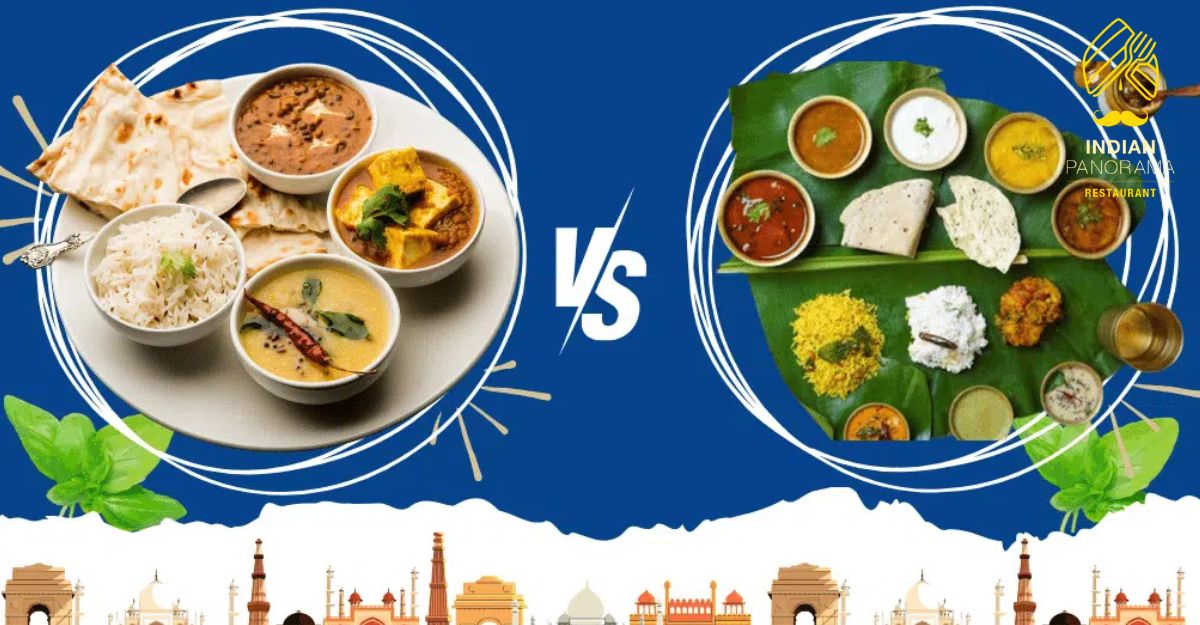What’s the Difference Between North and South Indian Cuisine?

Posted On April 24, 2025 by Admin
Imagine walking into an Indian restaurant in the UK and seeing butter chicken, dosa, biryani, and sambar all on the same menu. Feels like a delicious puzzle, right?
You are not wrong to feel a little lost. Indian cuisine is not one single flavor profile - it is a massive, mouthwatering spectrum. And if you are curious about how South Indian food vs North Indian actually stacks up, this guide is going to clear it all up. Whether you are a newbie or just wondering why naan is not served with everything, let’s dig into the tasty details.
Northern India is all about hearty, rich ingredients. You’ll find loads of wheat (hello naan and paratha), dairy (butter, yoghurt, cream), and those tomato-based gravies. Think of dishes that feel like a warm hug such as paneer tikka, butter chicken, chole (chickpeas), and all the good stuff cooked low and slow.
Head south and things shift. Rice replaces wheat. Coconut milk, curry leaves, and tamarind show up everywhere. The flavours lean tangy, peppery, and lighter. Dishes like dosa, idli, sambar, and rasam are the norm—served with chutneys that explode with taste.
In the North, cooking means slow-cooked curries and tandoor ovens. That is why you get that charred, smoky flavour in things like tandoori chicken or kebabs. It is rich and indulgent, and yes - perfect for scooping up with some garlic naan.
The South goes in a different direction - think steamed, sauteed, and tempered. They toss whole spices into hot oil for a sizzling finish (this is called tadka), layering flavour in the smartest way. You are more likely to get meals that are lighter on the stomach but punchy on the tongue.
Let’s talk spice because this is where things get interesting. Both regions love their masalas, but in different ways.
North Indian food uses warming spices like cinnamon, nutmeg, and cardamom. It is like comfort food that wraps you in flavour. Mild to medium heat, but so savory.
South Indian dishes? They hit hard - with mustard seeds, curry leaves, dried red chilies, tamarind, and black pepper. These meals can be tangy, sour, spicy, and fresh!
Craving something indulgent? North Indian meals are typically heavier especially when you add ghee, cream, and those buttery breads. They’re perfect for when you’re starving or just want to treat yourself.
South Indian food often wins on the “light but satisfying” scale. A plate of idli and sambar or lemon rice with a side of pickle is filling, but not overwhelming. Great if you’re keeping it light - but still want flavor in every bite.
Here’s the thing, there is no winner in the great South Indian food vs North Indian debate. They are both amazing, just different vibes. And the beauty is? In the Indian food types UK scene, you do not have to choose one.
At Indian Panorama, we’re obsessed with bringing both styles together under one roof. You want a creamy North Indian curry and a crispy South Indian dosa in the same meal? We’ve got you. We’ve created a menu that gives you the best of both regions.
So next time you’re craving something bold, beautiful, and made with love—come visit us.